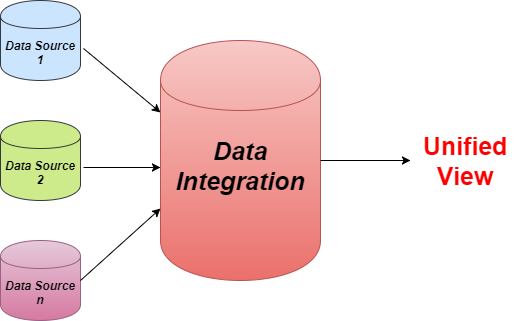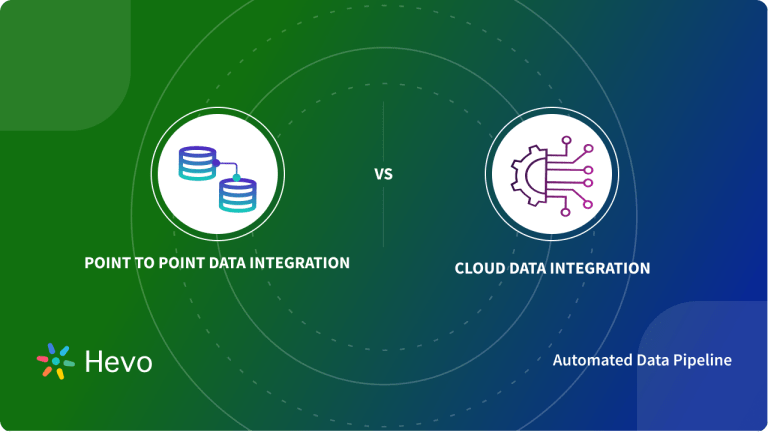In today’s world, businesses focus on gathering more data to extract valuable insights from and optimize business processes. In short, this helps businesses collect data efficiently, extract insights, and understand their customers by analyzing commodity purchase data and new behavior nudges.
Today, we augment business capabilities by leveraging standard SaaS applications. In this article, you will learn about data integration and the role of data integration in data mining. You will also read about different approaches and techniques used for data integration in data mining.
Table of Contents
What Is Data Integration?
Data integration is the process of combining data in various formats and structures from multiple sources into a single place like a database, data warehouse, or a destination of your choice. It is often used to support business processes, such as analytics, reporting, or data management. Its goal is to provide a comprehensive and accurate view of data from multiple sources, enabling users to analyze and gain insights that would not be possible with data from a single source.
What Is Data Mining?
Data mining is the process of analyzing large datasets to find patterns, trends, and useful insights. It helps businesses make better decisions by uncovering hidden relationships in data. Common techniques include classification, clustering, and association rule mining.
Why Is Data Mining Important?
Companies use data mining to analyze large datasets, gain insights, and stay competitive. It helps businesses track performance, predict trends, and refine strategies. In healthcare, data mining integrates patient records to detect diseases, improve diagnosis, and enhance medical research. It also ensures accurate processing of medical insurance claims and maintains data consistency for better decision-making.
What Is the Role of Data Integration in Data Mining?

Data integration plays a crucial role in data mining by combining data from multiple sources into a unified and consistent format. This process ensures that businesses can analyze complete and accurate datasets, leading to better insights and decision-making.
In data mining, raw data often comes from different databases, cloud storage, flat files, or data warehouses. These sources may use different formats, structures, and technologies, making it difficult to analyze them directly. Data integration resolves these inconsistencies by merging, transforming, and standardizing the data, providing a single, coherent view.
A well-integrated dataset enhances data mining techniques like clustering, classification, and association rule mining. It allows organizations to identify patterns, detect trends, and make accurate predictions. Industries such as finance, healthcare, and eCommerce rely on integrated data for fraud detection, medical diagnosis, customer segmentation, and personalized recommendations.
By ensuring data consistency, accuracy, and accessibility, data integration strengthens the foundation of data mining, enabling businesses to unlock valuable insights and drive data-driven strategies.
Streamline your migration process effortlessly by integrating data from multiple sources with Hevo. Our no-code platform ensures smooth, real-time data integration, making your data ready for in-depth analysis and insights.
- Integrate data from 150+ sources (60+ free sources).
- Utilize drag-and-drop and custom Python script features to transform your data.
- Keep your data updated in real-time.
Join over 2000+ customers across 45 countries who’ve streamlined their data operations with Hevo. Rated as 4.7 on Capterra, Hevo is the No.1 choice for modern data teams.
Get Started with Hevo for FreeWhat Are the Different Approaches in Data Mining?
Tight Coupling
Tight coupling is a process of combining data from various data sources using ETL (Extraction, Transformation, and Loading) into a single storage system such as a data warehouse. Here, data warehouses are treated as a data retrieval component.
Loose Coupling
In loose coupling, the data stays in its source. With this approach, you get an interface to send a query. This query is then transformed into a format that the data source understands. Once the source receives the query, it processes it and sends the data back to you as you requested.
Here’s a table comparing tight coupling and loose coupling:
| Aspect | Tight Coupling | Loose Coupling |
| Data Storage | Combines data from various sources into a single physical location. | Keeps data in the source database. |
| Data Processing | ETL (Extraction, Transformation, and Loading) processes data before storing it in a centralized location. | Queries are processed at runtime by interacting directly with the source databases. |
| Flexibility | Less flexible as all data must be pre-processed and stored centrally. | More flexible as data remains in its original location, allowing real-time querying and processing. |
What are Data Mining Techniques?
Manual Integration
- Manual integration is widely used by data analysts for collecting, cleaning, and integrating data to extract valuable information.
- This method avoids using automation during data integration. Manual integration is best suited for an organization with a small or limited dataset. It is a time-consuming task and dealing with huge datasets will be a tedious task.
Middleware Integration
- In middleware integration, middleware software is used to collect data from multiple data sources, normalize it, and store it in the destination data set.
- It is used whenever an organization wants to transfer or migrate data from legacy systems to modern databases.
- Middleware data integration in data mining acts as a medium or interpreter between legacy and modern systems.
Application-Based Integration
- Application-based integration uses software to extract, transform, and load data from data sources. It saves time and effort, but building such software applications requires technical understanding. Although this technique saves time and effort, it is complicated to implement.
Uniform Access Integration
- Uniform access integration technique integrates data from various data sources but it doesn’t change the location of the data, it stays in the original location.
- Users can integrate data to create a holistic view without the need for separate storage space.
Data Warehousing
- Data warehousing is similar to uniform access integration, but the only difference is it stores data in certain storage, The data warehouse enables data analysts, data scientists, and other users to handle more complex queries with ease.
- It delivers high query speed and a safe place to store business data.
Popular Tools Used for Data Integration in Data Mining
- Hevo – A no-code data pipeline platform that automates data integration, allowing seamless transfer of data from multiple sources to a destination in real-time.
- Talend – An open-source data integration tool that helps in data extraction, transformation, and loading (ETL) with built-in data quality and governance features.
- Informatica – A widely used enterprise-grade data integration tool that supports ETL, data warehousing, and real-time data processing.
- Apache Nifi – A powerful open-source tool that automates data flow between systems, enabling real-time data streaming and integration.
Issues in Data Integration for Data Mining
- Data Inconsistency – Different data sources may store the same information in varying formats, leading to duplication, conflicts, or mismatched values.
- Schema Mismatch – Data may follow different structures across sources, making it difficult to merge fields, tables, or attributes correctly.
- Data Quality Issues – Incomplete, outdated, or incorrect data can affect the accuracy of mining results, leading to poor insights.
- Scalability Challenges – Integrating large volumes of data from multiple sources can slow down processing and require significant computing resources.
- Security and Privacy Risks – Combining sensitive data from different systems increases the risk of data breaches, unauthorized access, or compliance violations.
- Real-Time Integration Complexity – Ensuring continuous and seamless data flow across various systems for real-time analytics can be difficult to implement and maintain.
Conclusion
Data integration plays a crucial role in data mining by combining information from multiple sources, enabling accurate analysis and better decision-making. Understanding different approaches and techniques helps businesses streamline operations and unlock valuable insights. Choosing the right integration method depends on your specific needs, data complexity, and business goals.
Wanna try Hevo? Sign up for a 14-day free trial and experience seamless, no-code data integration. Check out Hevo’s unbeatable pricing and see how it can transform your data workflows effortlessly!
FAQs
1. What is data integration with an example?
A company might have customer data in a CRM system, sales data in an ERP system, and marketing data in a separate tool. Data integration would involve merging these datasets so that all relevant information about a customer is available in one place, enabling better analysis and decision-making.
2. What is data cleaning and data integration in data mining?
– Data Cleaning: This involves detecting and correcting errors, inconsistencies, and inaccuracies in the data to ensure high quality. It may include removing duplicates, filling in missing values, and correcting data formats.
– Data Integration: In data mining, data integration combines data from multiple sources into a coherent dataset. This is essential for analyzing large datasets spread across different platforms or formats. Integrated data provides a complete and accurate basis for mining insights.
3. Why is data integration required in a data warehouse?
Data integration is crucial in a data warehouse because it combines data from multiple sources to create a comprehensive view of an organization’s information. Without data integration, a data warehouse would merely be a collection of isolated data silos, leading to fragmented insights and potentially incorrect conclusions.






